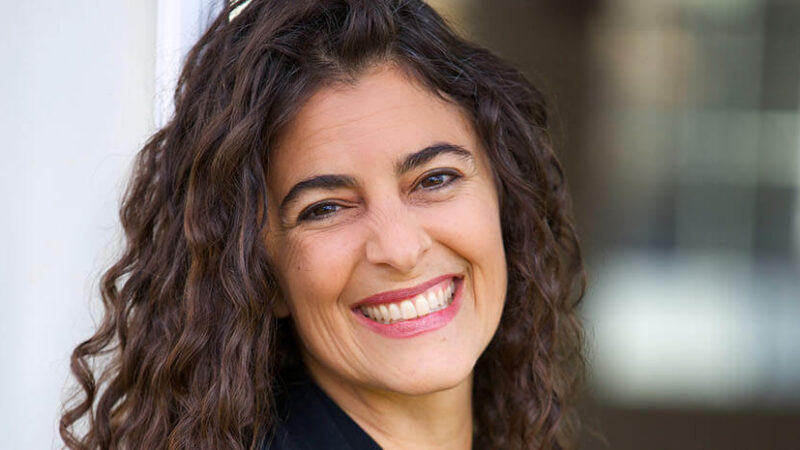 Most of us have lost our connection to the mysterious forces at play in the abdominal region, as well as to the appearance, function, and location of the organs and glands within it. We know that this area is responsible for digestion and assimilation, but in most Western cultures, a belly is considered healthy only according to its outer appearance: flat, “cut,” and firm. Good posture is supposed to be chest up, shoulders back, gut in. Emotionally, for many, the belly receives the brunt of our dysfunctional attempts to deal with negative feelings such as anger, fear, or low self-esteem.
Most of us have lost our connection to the mysterious forces at play in the abdominal region, as well as to the appearance, function, and location of the organs and glands within it. We know that this area is responsible for digestion and assimilation, but in most Western cultures, a belly is considered healthy only according to its outer appearance: flat, “cut,” and firm. Good posture is supposed to be chest up, shoulders back, gut in. Emotionally, for many, the belly receives the brunt of our dysfunctional attempts to deal with negative feelings such as anger, fear, or low self-esteem.
In general, popular Western culture has placed more prominence on the head (objective intellect) and heart (individual soul) centers for discernment and transformation, while overlooking what many Eastern or so-called primitive cultures consider an essential step—the prerequisite descent into the depths of our being (lower centers), which is necessary before the ascent toward higher levels of awareness (upper centers). Our attention has moved away from the profound intelligence of the lower physical and emotional center of the body—our “guts.”
However, remnants of understanding are still found in common expressions in our languages, intimating a time when we recognized the power of the lower centers. In English, to have “a gut feeling” suggests a deep understanding that often is hard to explain logically, and in the past, feelings that come from deep in our center were considered more reliable than those that came from “above”: the heart or the head. Then there is someone with “guts,” which implies courage and unwavering integrity.
In Japan, the word hara can be simply translated as “belly,” but the roots of its meaning extend far beyond the physical abdomen. In Japanese culture, hara takes on a meaning that involves almost every aspect of life. It implies all that is considered essential to a person’s character and spiritual evolvement. Hara is the center of the human body, but not just of the physical body. In many idiomatic Japanese expressions where the root word is found, the meanings suggest a deeper context for the term. In his book Hara: The Vital Center of Man, Karlfried Graf Dürckheim describes one such expression: Hara no aru hito. It suggests not only one who possesses “center” physically, as in posture and balance, but also one who maintains balance in every way, including emotionally and mentally. This person is capable of tranquility in the face of strain, moves in and about the world with serenity, and possesses an inner elasticity that allows quick and decisive responses to any situation that arises. The hara is also seen as the place where the body’s vital life energies collect and are expressed, whether through physical movement or energetic presence.
Hara means an understanding of the significance of the middle of the body as the foundation of an overall feeling for life.
—Karlfried Graf Dürckheim
It is this very quality of hara that we look for in our yoga practice. What is referred to in Patanjali’s Yoga Sutras as sthira sukham is a state of unconditional calm that is not dependent on any outward circumstances. When in it, we command heightened sensitivity and an increased readiness to meet the unexpected. Here we realize that our capacity for appropriate response in the practice of asana can only come from the genuine absence of tension, coupled with the correct attitude of mind and lightness of heart. Throughout the practice of yoga poses, cultivating softness in the belly helps release a subtle downward flow and sense of fluidity that can be felt there and moving down into the pelvic floor, providing an intuitive invitation to move more deeply in all poses, especially those that turn or lengthen through the waist.
How the belly “thinks” intuitively could be a function of what science is now calling our second brain, or the enteric nervous system, which is an extensive network of neurons embedded in the lining of our gastrointestinal tract, from esophagus to anus. In addition to its handling of nearly all the digestive functions of our intestines, it is important to understand how this system of neurons intimately connects with our autonomic nervous system and, through the vagus nerve, becomes a critical component of parasympathetic control of the heart, lungs, and intestines.
The vagal channel of communication between the abdominal organs and the brain includes branches of cardiac and pulmonary ganglion, which suggests a shared relationship among these organs as well and offers a scenario in which the interrelationships are established both anatomically and energetically. The enteric system includes many of the same neurotransmitters found in the brain, including dopamine (in the intestines, it reduces peristaltic movement and maintains the inner linings of the intestinal tract; in the brain, it stimulates desire and motivation for reward response, or pleasure), serotonin (in the intestines, it stimulates peristaltic movement; in the brain, it regulates mood, appetite, and sleep), and acetylcholine (in the intestines, it stimulates peristaltic movement; in the brain, it regulates arousal, attention, memory, and motivation).
Numerous scientific studies have shown that the voluntary control of slow breathing has a substantial positive effect on our parasympathetic response. There is multidirectional communication via vagal signals to and from the brain to quiet frontal cortical activity, as well as an inhibitory influence upon the heart and sympathetic nervous system activity to and from the gastrointestinal tract that improves peristaltic function while strengthening immune system response in the gut.
Breathing is not merely an in-drawing and outstreaming of air, but a fundamental movement of a living whole, affecting the world of the body as well as the regions of the soul and mind.
—Karlfried Graf Dürckheim
This is an excerpt from Gravity & Grace: How to Awaken Your Subtle Body and the Healing Power of Yoga by Peter Sterios.


Peter Sterios is a popular yoga teacher and trainer with over four decades of experience. He’s the founder of LEVITYoGA™ and MANDUKA™, as well as KarmaNICA™, a charitable organization for underprivileged children in rural Nicaragua. Sterios taught yoga at the White House for Michelle Obama’s anti-obesity initiatives for three years, and in 2018 he was invited to the Pentagon to share yoga’s therapeutic effects with the US Marine Corps. He resides in San Luis Obispo, CA. For more, visit LEVITYoGA.com.
Read Gravity & Grace today!

 Peter Sterios, author of Gravity and Grace, is a popular yoga teacher and trainer with over four decades experience. He’s the founder of LEVITYoGA™ and MANDUKA™, as well as KarmaNICA™, a charitable organization for underprivileged children in rural Nicaragua. Sterios taught yoga at the White House for Michelle Obama’s anti-obesity initiatives for three years, and in 2018 he was invited to the Pentagon to share yoga’s therapeutic effects with the US Marine Corps. He resides in San Luis Obispo, CA. For more, visit LEVITYoGA.com.
Peter Sterios, author of Gravity and Grace, is a popular yoga teacher and trainer with over four decades experience. He’s the founder of LEVITYoGA™ and MANDUKA™, as well as KarmaNICA™, a charitable organization for underprivileged children in rural Nicaragua. Sterios taught yoga at the White House for Michelle Obama’s anti-obesity initiatives for three years, and in 2018 he was invited to the Pentagon to share yoga’s therapeutic effects with the US Marine Corps. He resides in San Luis Obispo, CA. For more, visit LEVITYoGA.com.


 Most of us have lost our connection to the mysterious forces at play in the abdominal region, as well as to the appearance, function, and location of the organs and glands within it. We know that this area is responsible for digestion and assimilation, but in most Western cultures, a belly is considered healthy only according to its outer appearance: flat, “cut,” and firm. Good posture is supposed to be chest up, shoulders back, gut in. Emotionally, for many, the belly receives the brunt of our dysfunctional attempts to deal with negative feelings such as anger, fear, or low self-esteem.
Most of us have lost our connection to the mysterious forces at play in the abdominal region, as well as to the appearance, function, and location of the organs and glands within it. We know that this area is responsible for digestion and assimilation, but in most Western cultures, a belly is considered healthy only according to its outer appearance: flat, “cut,” and firm. Good posture is supposed to be chest up, shoulders back, gut in. Emotionally, for many, the belly receives the brunt of our dysfunctional attempts to deal with negative feelings such as anger, fear, or low self-esteem.








